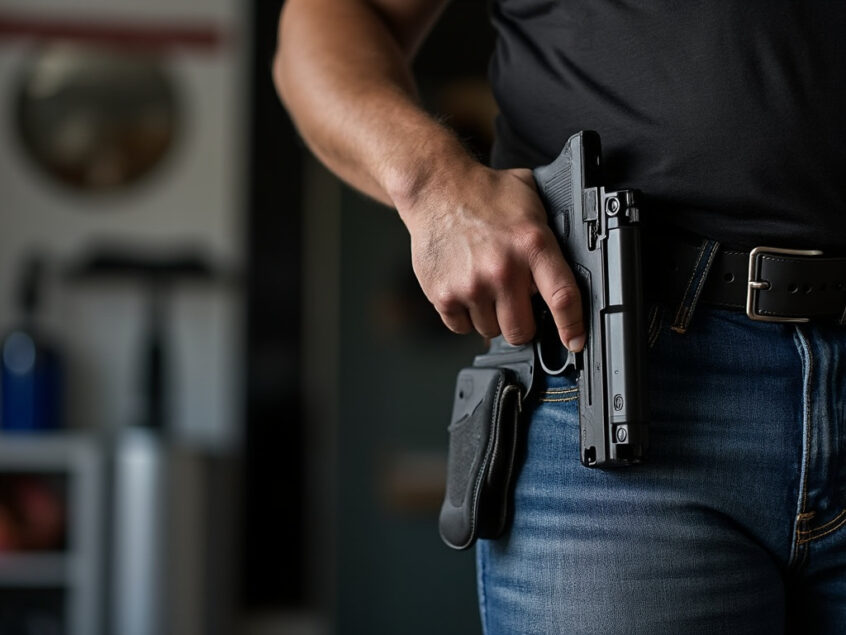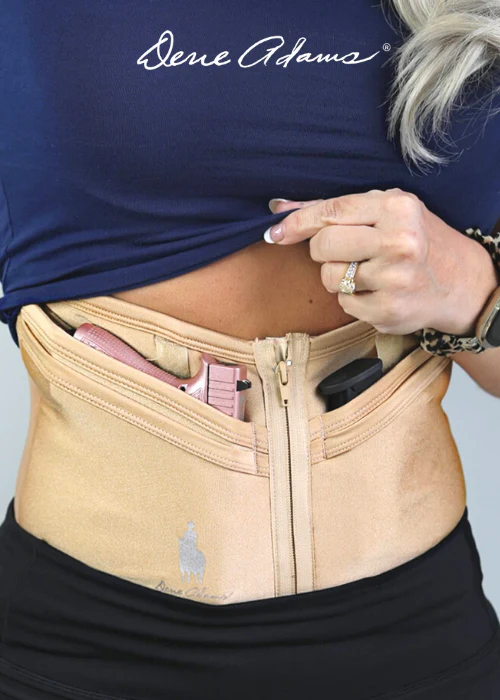Holster safety is a vital concern for firearms enthusiasts, especially concealed carry owners who prioritize responsible gun ownership. A quality holster ensures your firearm stays secure and accessible, reducing risks that could compromise safety. However, choosing the wrong holster can lead to serious issues, like negligent discharges or slow draws in critical moments. For those who carry daily, understanding holster safety can mean the difference between confidence and catastrophe. This article explores how to select the right holster and maintain it effectively.
Throughout this guide, we’ll cover essential aspects of holster safety, tailored for both seasoned professionals and newcomers. Resources from E3 Firearms Association will enhance your understanding without overwhelming you. Let’s dive into why holster safety matters and how to ensure your gear supports your readiness.
Understanding Holster Safety
What Makes a Holster Safe?
A safe holster does more than just hold your firearm—it protects you and others from avoidable accidents. Primarily, it must fully cover the trigger guard to prevent unintended discharges. Additionally, secure retention keeps the gun in place, whether you’re running or sitting down. A holster failing these basics can turn a routine carry into a dangerous situation.
For instance, some older designs might sag over time, exposing the trigger or loosening their grip. Consequently, this increases the chance of the firearm slipping out unnoticed. Exploring holster safety basics can clarify what to look for in a reliable option.
The Risks of Poor Choices
Flimsy holsters pose real threats, often overlooked by those new to carrying firearms. A negligent discharge can happen if debris gets inside an uncovered trigger guard. Similarly, poor retention might delay your draw when seconds count, leaving you vulnerable. These risks underscore the need for careful selection over convenience or cost.
Interestingly, even small details—like a worn strap—can weaken a holster’s performance over time. Checking out common holster risks offers insights into avoiding these pitfalls.
Choosing the Right Holster
Materials Matter
The material of your holster affects both its safety and longevity, so choose wisely. Leather offers a classic feel and molds to your body, but it softens with age. Conversely, Kydex provides rigid durability and consistent retention, though it might dig into your side. Hybrid options blend these benefits, balancing comfort with reliability.
A little-known factor is how sweat can degrade leather faster than expected, reducing its hold. Learn more about materials in this holster materials guide for a deeper dive.
Retention Mechanisms
Retention determines how well your holster secures your firearm, and options vary widely. Passive retention uses friction alone, suitable for most concealed carriers. Active retention, like thumb breaks, adds an extra layer, ideal for high-activity scenarios. However, too much retention can slow your draw if not practiced regularly.
Some designs even use subtle screws to fine-tune tension, a detail often missed by beginners. For specifics, see retention mechanisms explained on the E3 site.
Fit and Compatibility
A holster must match your firearm perfectly—universal fits rarely cut it for safety. A custom fit ensures the trigger stays covered and the gun stays put. Before buying, test how it feels on your body and with your draw motion. This step prevents surprises in real-world use.
Occasionally, slight variances in gun models can affect fit, so double-check compatibility. The holster fit tips page offers practical advice on this.
Common Mistakes and How to Avoid Them
Skimping on Quality
Opting for a cheap holster might save money upfront, but it’s a gamble with your safety. Low-quality options often lack proper trigger coverage or durable stitching. Instead, invest in a trusted brand known for consistent performance. Your peace of mind is worth the extra cost.
Surprisingly, some budget holsters fail after just a few months of regular use. Avoid this trap with tips from avoiding cheap holsters.
Ignoring Maintenance
Even the best holsters need care to stay safe and functional over time. Leather requires conditioning to prevent cracking, while Kydex needs checks for wear spots. Neglecting this can weaken retention or damage your firearm’s finish. Regular upkeep keeps your gear reliable.
For example, dust buildup inside can subtly affect a smooth draw, a detail easy to miss. The holster maintenance 101 guide covers this well.
Skipping Practice
A holster isn’t safe if you don’t know how to use it under pressure. Failing to practice your draw can lead to fumbles or worse. Therefore, spend time at the range perfecting your technique with your chosen holster. Confidence comes from repetition.
Many overlook practicing reholstering, which can be just as critical. Check draw practice tips for a solid starting point.
Trends in Holster Design and Technology
Modular Systems
Modern holsters are leaning toward flexibility, with modular designs gaining popularity fast. These let you adjust angles and positions for a personalized fit. As a result, you get comfort without sacrificing quick access. This trend reflects a shift toward user-focused gear.
Some even swap parts for different carry styles, a clever perk for versatility. Explore this in modular holster trends.
Advanced Materials
New materials like reinforced polymers are making holsters lighter yet tougher than ever. These resist wear better than traditional options, extending their lifespan. Meanwhile, 3D printing allows for precise, custom shapes at lower costs. Innovation is driving safety forward.
A hidden benefit is how these materials reduce noise during movement, a plus for stealth. See more at advanced holster materials.
Smart Features
Some holsters now include tech like tension sensors or quick-release systems for pros. These features enhance security and speed, catering to tactical users. However, they’re still niche and may not suit everyday carry yet. Still, they hint at the future.
Few realize these can track wear patterns, alerting you to potential issues. Dive into smart holster tech for details.
The Role of Training in Holster Safety
Building Muscle Memory
Training with your holster builds the muscle memory needed for safe, swift draws. Start slow in a safe space, focusing on smooth motions. Over time, this reduces hesitation in high-stakes moments. Consistency is key to mastering this skill.
Notably, practicing with a loaded gun changes the feel slightly, so simulate it safely. The muscle memory training page has great pointers.
Safety Habits
Beyond technique, training instills habits like keeping your finger off the trigger until ready. This prevents accidents during reholstering, a common error point. Likewise, checking your holster for obstructions becomes second nature. These habits save lives.
A lesser-known tip is to rehearse clearing clothing first, vital for concealed carry. Visit safety habits guide for more.
Finding Resources
Quality training often means seeking out instructors or online courses tailored to holster use. Many ranges offer classes focused on concealed carry skills. Alternatively, online content can supplement your practice effectively. Both paths boost your competence.
For a start, holster training resources lists some excellent options to explore.
Conclusion
Holster safety is non-negotiable for anyone carrying a firearm, especially concealed carry owners. A well-chosen holster mitigates risks like negligent discharges and ensures readiness when it matters most. By focusing on quality materials, proper fit, and regular training, you enhance your safety daily. Trends in design only reinforce the importance of staying informed and equipped.
Take the next step by evaluating your current holster and practicing with it regularly. Resources like those on holster safety checklist can guide your choices. Prioritize holster safety today—it’s the foundation of responsible gun ownership.
For more firearms resources and insights, be sure to visit: https://www.e3firearmsassociation.com/blog/


